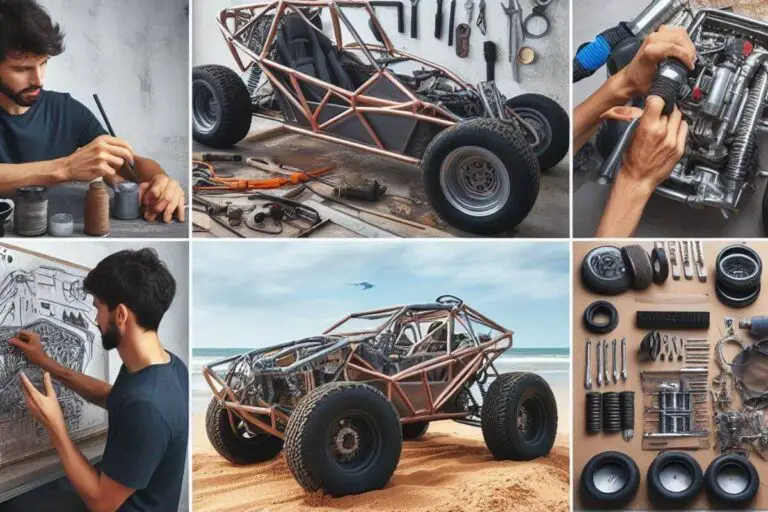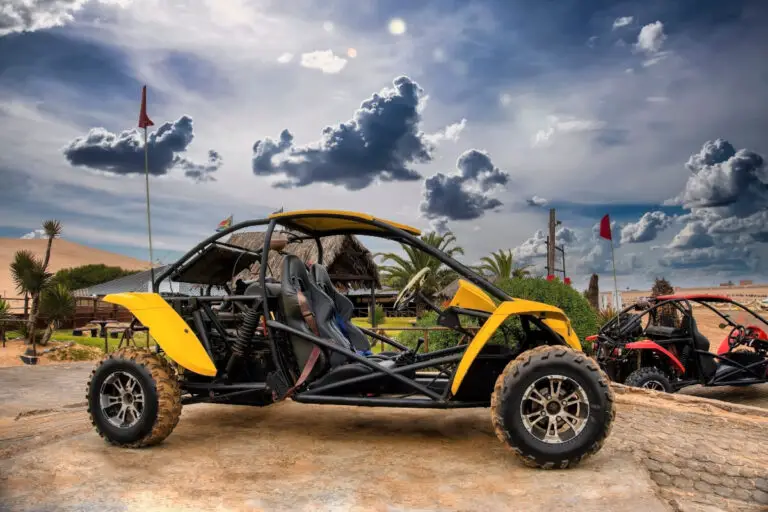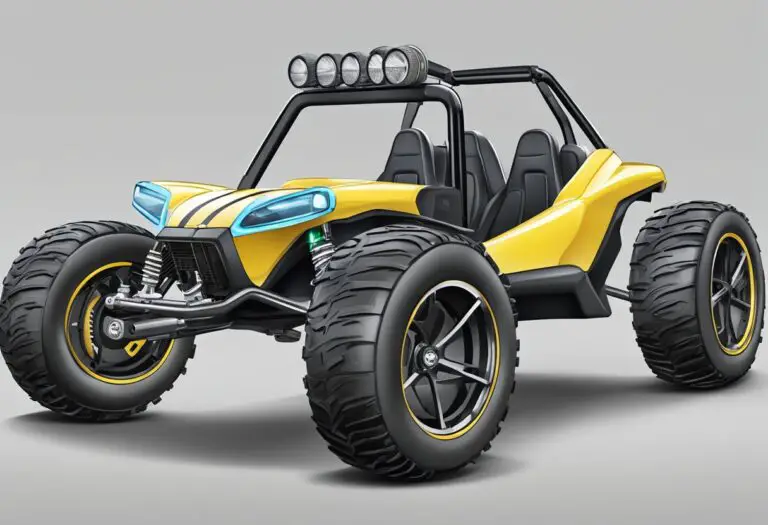How Much Is a Volkswagen Dune Buggy: A Comprehensive Guide
Volkswagen dune buggies are an iconic vehicle that has been popular for decades. These vehicles are known for their unique design and off-road capabilities, making them a favorite among adventure seekers. If you’re interested in purchasing a Volkswagen dune buggy, you may be wondering how much they cost. In this article, we’ll explore the pricing of new models, cost of ownership, pre-owned market values, financing options, customization costs, comparative analysis, and incentives and rebates to help you determine the price of a Volkswagen dune buggy.

Volkswagen Dune Buggy Overview The Volkswagen dune buggy was first introduced in the 1960s and quickly became a popular vehicle for off-road enthusiasts. The design was based on the Volkswagen Beetle and featured an open-body design with a fiberglass shell. The dune buggy was designed to be lightweight, making it ideal for driving on sand dunes and other off-road terrain.
Pricing of New Models If you’re interested in purchasing a new Volkswagen dune buggy, you can expect to pay anywhere from $15,000 to $30,000, depending on the make and model. The cost of a new dune buggy will vary depending on the features and options you choose. Some of the most popular models include the Manx, the Empi Sportster, and the Sand Rail. Keep in mind that the price of a new dune buggy is just the beginning. You’ll also need to factor in the cost of ownership, including insurance, maintenance, and repairs.
Key Takeaways
- Volkswagen dune buggies are a popular vehicle for off-road enthusiasts.
- The pricing of new models can range from $15,000 to $30,000.
- The cost of ownership, including insurance, maintenance, and repairs, should also be considered.
Volkswagen Dune Buggy Overview

Volkswagen dune buggies are recreational vehicles that are built on the chassis of a VW Beetle and customized with lightweight fiberglass or other materials to create an open-style body. They are popular for cruising at the beach or tearing up the sand dunes.
The price of a Volkswagen dune buggy can vary depending on several factors such as the age, condition, and customization of the vehicle. According to the search results, the highest sale price for a dune buggy was $106,400, but there are also many options available for much less.
When shopping for a Volkswagen dune buggy, it is important to consider the following factors:
- Age: Older models may have more wear and tear, but they can also have a classic look that many enthusiasts prefer.
- Condition: Check for any signs of damage or rust, as these can be costly to repair.
- Customization: The more customized a dune buggy is, the higher the price will typically be. Consider whether the customization is worth the extra cost.
Overall, Volkswagen dune buggies are a fun and unique recreational vehicle that can provide hours of entertainment. With careful consideration of the factors mentioned above, it is possible to find a dune buggy at a reasonable price.
Pricing of New Models

Base Model Costs
The average price of a new Volkswagen dune buggy is approximately $13,632. The base model cost may vary based on the year, make, and model of the vehicle. The price of a Volkswagen dune buggy may also be influenced by the location, supply, and demand.
Optional Features and Packages
Optional features and packages may increase the price of a Volkswagen dune buggy. Some of the optional features and packages may include air conditioning, power windows, and a premium sound system. The cost of these optional features and packages may vary based on the dealership.
Dealer Pricing Variations
The price of a Volkswagen dune buggy may vary based on the dealership. Some dealerships may offer discounts or promotions that may lower the price of the vehicle. It is recommended to shop around and compare prices from different dealerships to find the best deal.
Based on the search results, the lowest recorded sale price of a Volkswagen dune buggy was $4,250 for a 1975 model. However, it is important to note that this price may not be representative of the current market value of a Volkswagen dune buggy.
Cost of Ownership

When it comes to owning a Volkswagen dune buggy, there are several costs to consider. In this section, we will explore the insurance costs, maintenance expenses, fuel efficiency, and economy of a Volkswagen dune buggy.
Insurance Costs
The cost of insurance for a Volkswagen dune buggy will depend on several factors, including the age of the vehicle, the driver’s age and driving record, and the location of the owner. Generally, insurance for a dune buggy is less expensive than for a traditional car, as they are not typically used as primary vehicles and are not driven as often. However, it is important to shop around and compare rates to ensure that you are getting the best deal.
Maintenance Expenses
Maintenance expenses for a Volkswagen dune buggy can vary depending on the age and condition of the vehicle. Since dune buggies are often built from a Volkswagen Beetle chassis, many parts are readily available and relatively inexpensive. However, customization and modifications can increase the cost of maintenance. Regular maintenance such as oil changes, tire rotations, and brake inspections are important to keep the vehicle running smoothly and prevent costly repairs down the line.
Fuel Efficiency and Economy
Volkswagen dune buggies are not known for their fuel efficiency, as they typically have larger engines and are used for off-road adventures. However, the cost of fuel will depend on the type of engine and how the vehicle is driven. It is important to note that dune buggies are not typically used as primary vehicles and are not driven as often, which can help offset the cost of fuel. Additionally, modifications such as switching to a more fuel-efficient engine or installing a fuel injection system can help improve fuel economy.
In summary, owning a Volkswagen dune buggy can be a fun and exciting experience, but it is important to consider the associated costs. Insurance rates for dune buggies are generally less expensive than traditional vehicles, but it is important to shop around for the best rates. Regular maintenance is important to keep the vehicle running smoothly and prevent costly repairs down the line. While dune buggies are not known for their fuel efficiency, modifications can help improve fuel economy.
Pre-Owned Market Values

Depreciation Factors
When it comes to buying a pre-owned Volkswagen Dune Buggy, there are several factors that can affect the price. One of the most important factors is depreciation. Like any other vehicle, a Dune Buggy loses value over time due to wear and tear, age, and other factors. The rate of depreciation can vary depending on the make, model, and year of the Dune Buggy.
Another factor that can affect the price of a pre-owned Dune Buggy is the condition of the vehicle. A well-maintained Dune Buggy that has been driven sparingly will typically command a higher price than a vehicle that has been driven hard and put away wet.
Buying Used: What to Expect
When buying a pre-owned Dune Buggy, it’s important to do your due diligence. This includes researching the vehicle’s history, checking for any signs of damage or wear and tear, and taking it for a test drive.
It’s also important to keep in mind that pre-owned Dune Buggies may require some maintenance and repairs. This is especially true for older models, which may have more wear and tear than newer models. Buyers should be prepared to invest some time and money into maintaining their Dune Buggy to keep it in top condition.
Overall, pre-owned Dune Buggies can be a great value for buyers who are looking for a fun and unique vehicle. By considering factors like depreciation and the condition of the vehicle, buyers can find a pre-owned Dune Buggy that fits their needs and budget.
Financing Options

When it comes to financing a Volkswagen dune buggy, there are several options available to the buyer. In this section, we will explore loan terms and rates, as well as the pros and cons of leasing versus buying.
Loan Terms and Rates
Financing a dune buggy through a loan is a common option for buyers who want to own the vehicle outright. The loan terms and rates will vary depending on the lender, credit score, and other factors. It is recommended that buyers shop around and compare offers from different lenders to find the best deal.
Some lenders may offer longer loan terms, which can result in lower monthly payments but may also mean paying more in interest over time. Shorter loan terms may have higher monthly payments but result in paying less in interest overall.
Interest rates for dune buggy loans can also vary depending on the lender and the buyer’s credit score. Buyers with good credit can typically qualify for lower interest rates, while those with poor credit may have higher rates.
Leasing vs Buying
Another financing option for dune buggy buyers is leasing. Leasing allows the buyer to use the vehicle for a set period of time, typically 2-3 years, and then return it to the dealer at the end of the lease term.
Leasing can be a good option for buyers who want lower monthly payments and the ability to upgrade to a new vehicle every few years. However, there are some downsides to leasing, such as mileage restrictions and the need to return the vehicle in good condition.
Buying a dune buggy outright may be a better option for those who want to own the vehicle long-term and have more flexibility with how they use it. However, it may require a larger down payment and higher monthly payments compared to leasing.
Overall, buyers should consider their individual financial situation and goals when deciding whether to finance a dune buggy through a loan or lease. It is important to shop around and compare offers from different lenders or dealerships to find the best deal.
Customization Costs

Customizing a Volkswagen dune buggy can add significant costs to the overall price. The following subsections will provide an overview of the costs associated with aftermarket parts, custom paint, and detailing.
Aftermarket Parts
Aftermarket parts are a popular way to customize dune buggies. These parts can range from basic upgrades such as new wheels and tires, to more extensive modifications such as engine swaps and suspension upgrades. The cost of aftermarket parts can vary greatly depending on the specific part and the brand. For example, a set of high-performance shocks can cost anywhere from $200 to $1,000.
Custom Paint and Detailing
Custom paint and detailing are another popular way to personalize a dune buggy. The cost of custom paint can vary greatly depending on the complexity of the design and the quality of the paint used. A basic paint job can cost around $1,000, while a more complex design can cost upwards of $5,000. Detailing services such as chrome plating and powder coating can add additional costs as well.
It is important to note that customization costs can quickly add up, and it is important to budget accordingly. It is recommended to research and compare prices from multiple vendors before making any purchases.
Comparative Analysis

Competitors in the Market
When it comes to buying a Volkswagen dune buggy, there are several competitors in the market that offer similar off-road vehicles. These competitors include:
- Manx
- Sand Rail
- Baja Bug
- Rail Buggy
While each of these competitors has its own unique features and benefits, the Volkswagen dune buggy is the most popular choice among off-road enthusiasts due to its affordability, reliability, and ease of customization.
Resale Value Comparison
When it comes to resale value, the Volkswagen dune buggy holds its value well compared to its competitors. According to recent data, a classic VW dune buggy from the 1960s can cost around $16,000 (and as much as $30,000!), depending on the seller. The mileage and condition of the vehicle can affect the costs, but it is possible to find a VW dune buggy that costs less than $3,000, particularly a used one with mileage.
Compared to its competitors, the Volkswagen dune buggy has a higher resale value due to its popularity and widespread availability. Manx dune buggies, for example, can cost upwards of $20,000, while Sand Rails can cost $25,000 or more. Baja Bugs and Rail Buggies can also be expensive, with some models costing as much as $40,000 or more.



